*NURSING > QUESTIONS and ANSWERS > TEAS 6- PRACTICE QUESTIONS (All)
TEAS 6- PRACTICE QUESTIONS
Document Content and Description Below
1) Which of the following correctly lists the cellular hierarchy from the simplest to most complex structure? a. Tissue, cell, organ, organ system, organism b. Organism, organ system, organ, tissue,... cell c. Organ system, organism, organ, tissue, cell d. Cell, tissue, organ, organ system, organism 2) If a cell is placed in a hypertonic solution, what will happen to the cell? a. It does not affect the cell b. It will swill c. It will stay the same d. It will shrink i. Hypertonic solution is a solution with a higher particle concentration and lower water content outside the cell. Water moves from the cell to the solution, losing water and shrinking. 3) What is the longest phase of the cell cycle? a. Cytokinesis b. Interphase c. Metaphase d. Mitosis 4) B = alleles for brown eyes; g = alleles for green eyes B g B Bg Bg g Bg gg What word describes the allele for green eyes? a. Heterozygous b. Dominant c. Recessive d. Homozygous i. Recessive alleles are represented by lower case letters 5) What is the possibility that the offspring produces will have brown eyes? a. 100% b. 25% c. 75% d. 50% 6) What are groups of cells that perform the same function? a. Molecules b. Organs c. Plastids d. Tissues 7) When does the nuclear division of somatic cells take place during cellular respiration? a. Mitosis b. Interphase c. Meiosis d. Cytokinesis i. Nuclear division of somatic cells takes place during mitosis 8) Which group of major parts and organs make up the immune system? a. Lymphatic system, spleen, tonsils, thymus, and bone marrow b. Nose, trachea, bronchial tubes, lungs, alveolus, and diaphragm c. Brain, spinal cord, and nerve cells d. Heart, veins, arteries, and capillaries 9) The rate of a chemical reaction depends on all of the following except a. Surface area b. Temperature c. Presence of catalysts d. Amount of mass lost 10) Which of the answer choices provided best defines the following statement? For a given mass and constant temperature, an inverse relationship exists between the volume and pressure of a gas? a. Boyle’s Law b. Ideal Gas Law c. Charles’ Law d. Stefan-Boltzmann Law 11) Prokaryotic and eukaryotic cells are similar in having which of the following? a. Integral membrane proteins in the plasma membrane b. Presence of a nucleus c. Membrane-bound organelles d. Protein-studded DNA 12) What is the role of ribosomes? a. Waste removal b. Make proteins c. Storage d. Transport 13) Which of the following is an example of a tissue? a. Mammal b. Xylem c. Liver d. Hamstring 14) The adrenal glands are part of the a. Emphatic system b. Respiratory system c. Endocrine system d. Immune system [Show More]
Last updated: 2 years ago
Preview 1 out of 25 pages
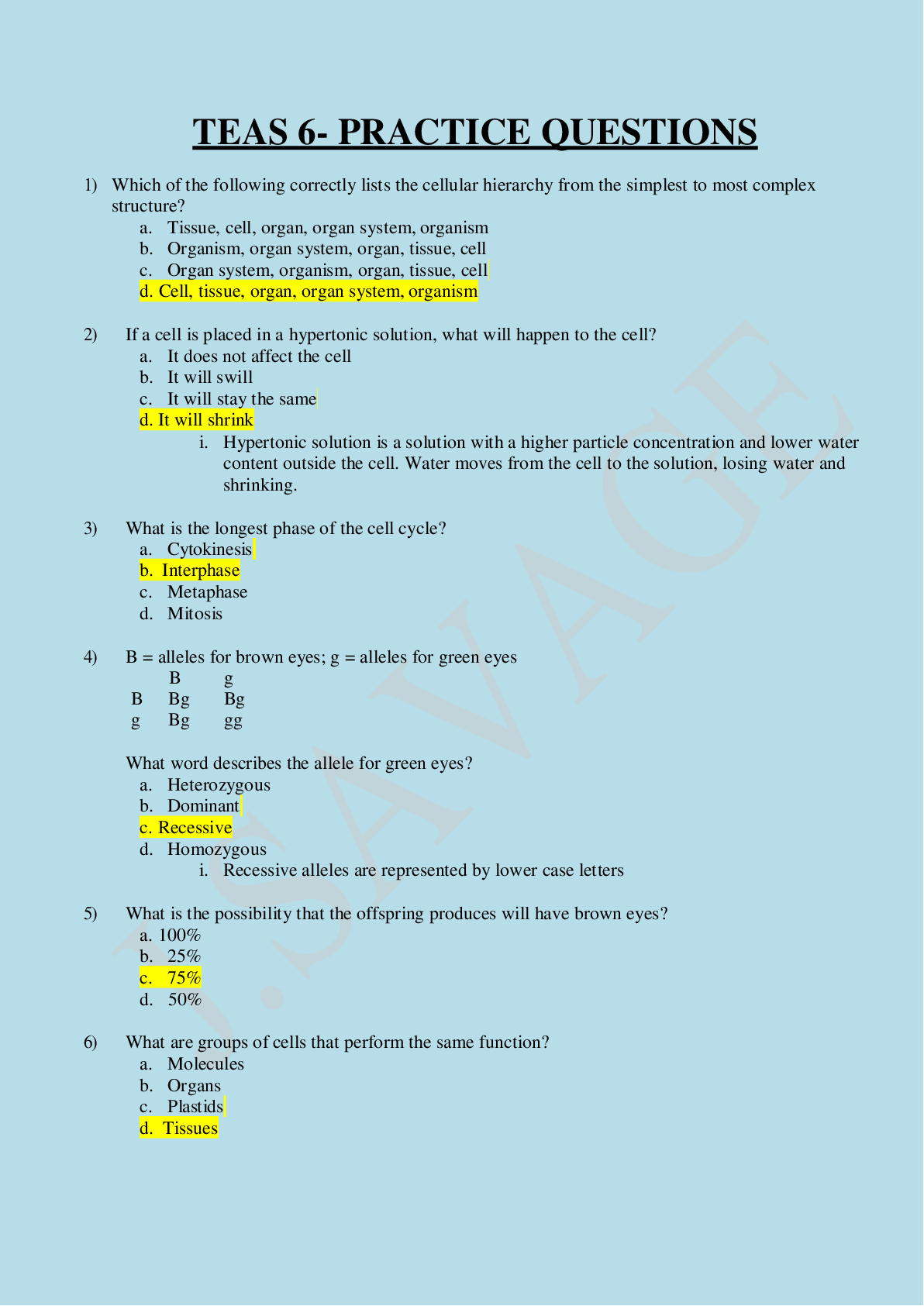
Buy this document to get the full access instantly
Instant Download Access after purchase
Buy NowInstant download
We Accept:

Reviews( 0 )
$7.00
Can't find what you want? Try our AI powered Search
Document information
Connected school, study & course
About the document
Uploaded On
Jun 09, 2021
Number of pages
25
Written in
Additional information
This document has been written for:
Uploaded
Jun 09, 2021
Downloads
0
Views
79
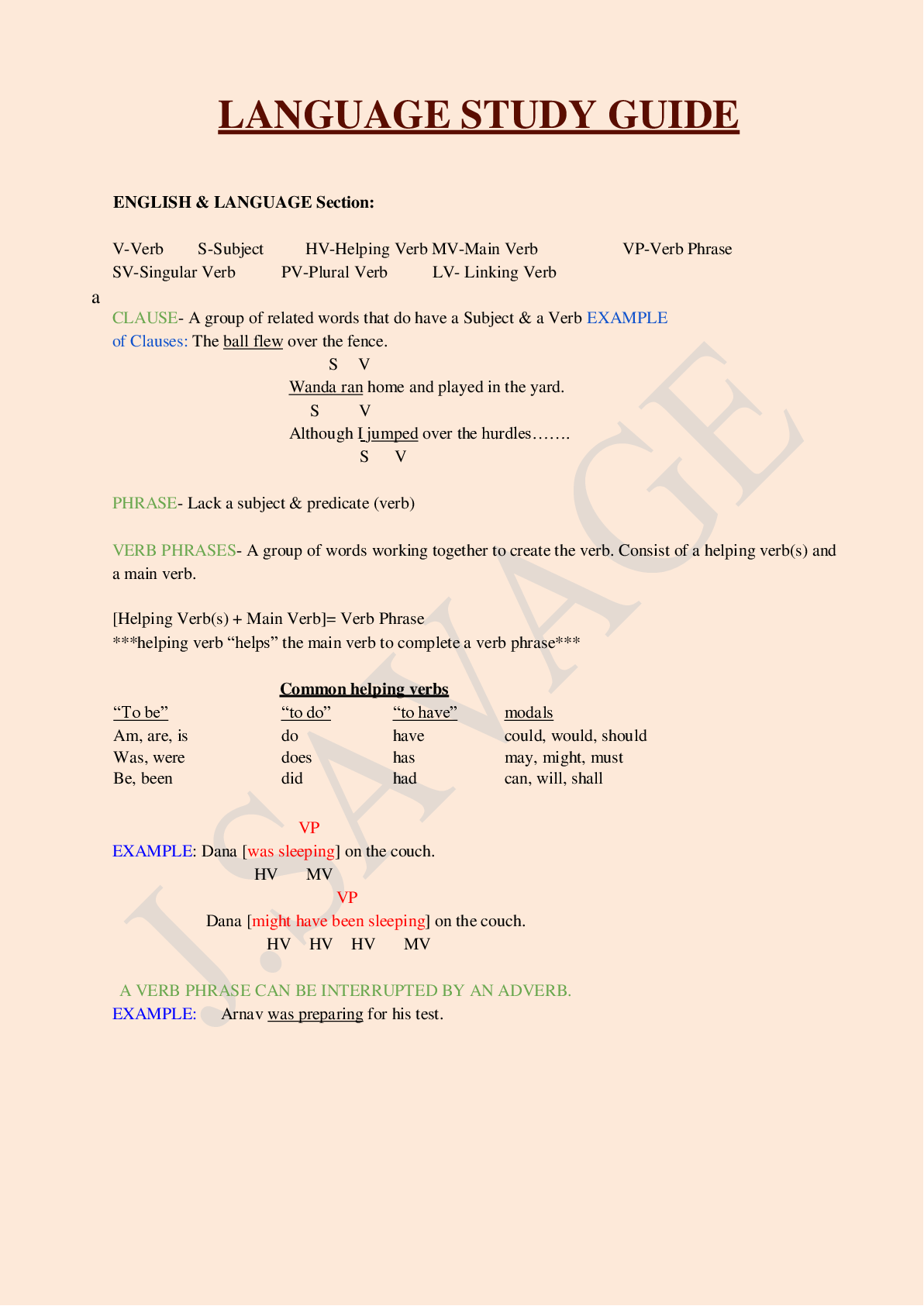








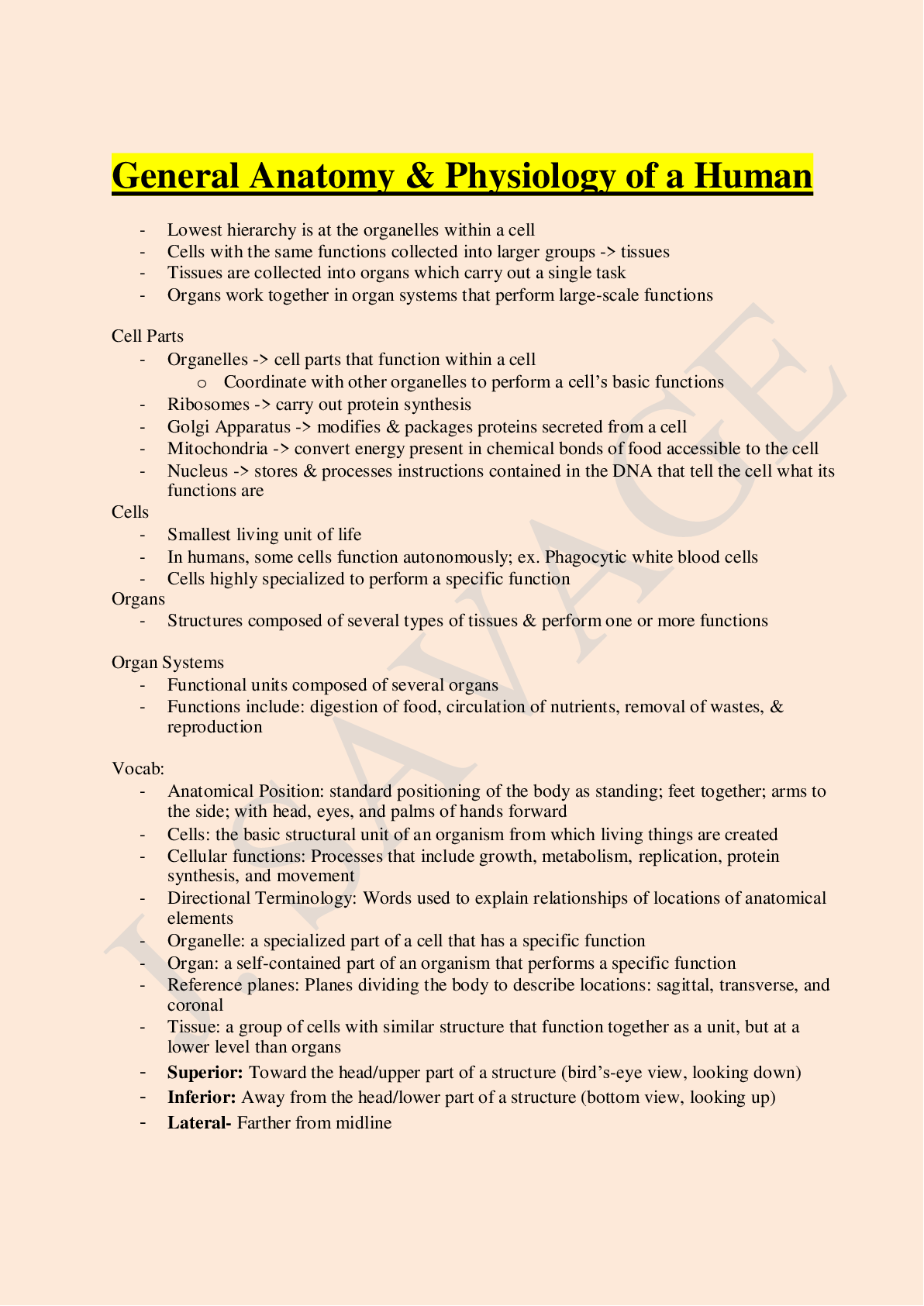
.png)
.png)




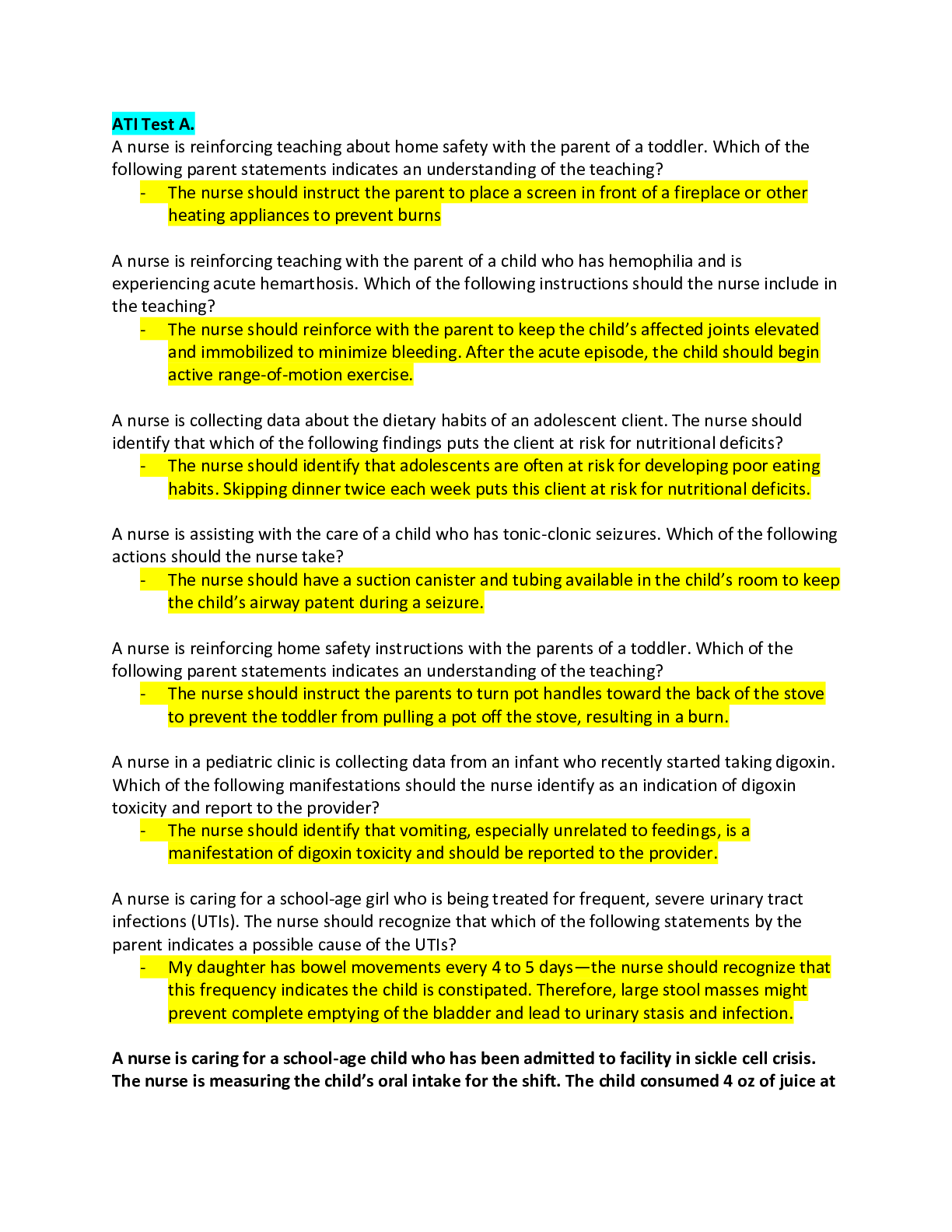

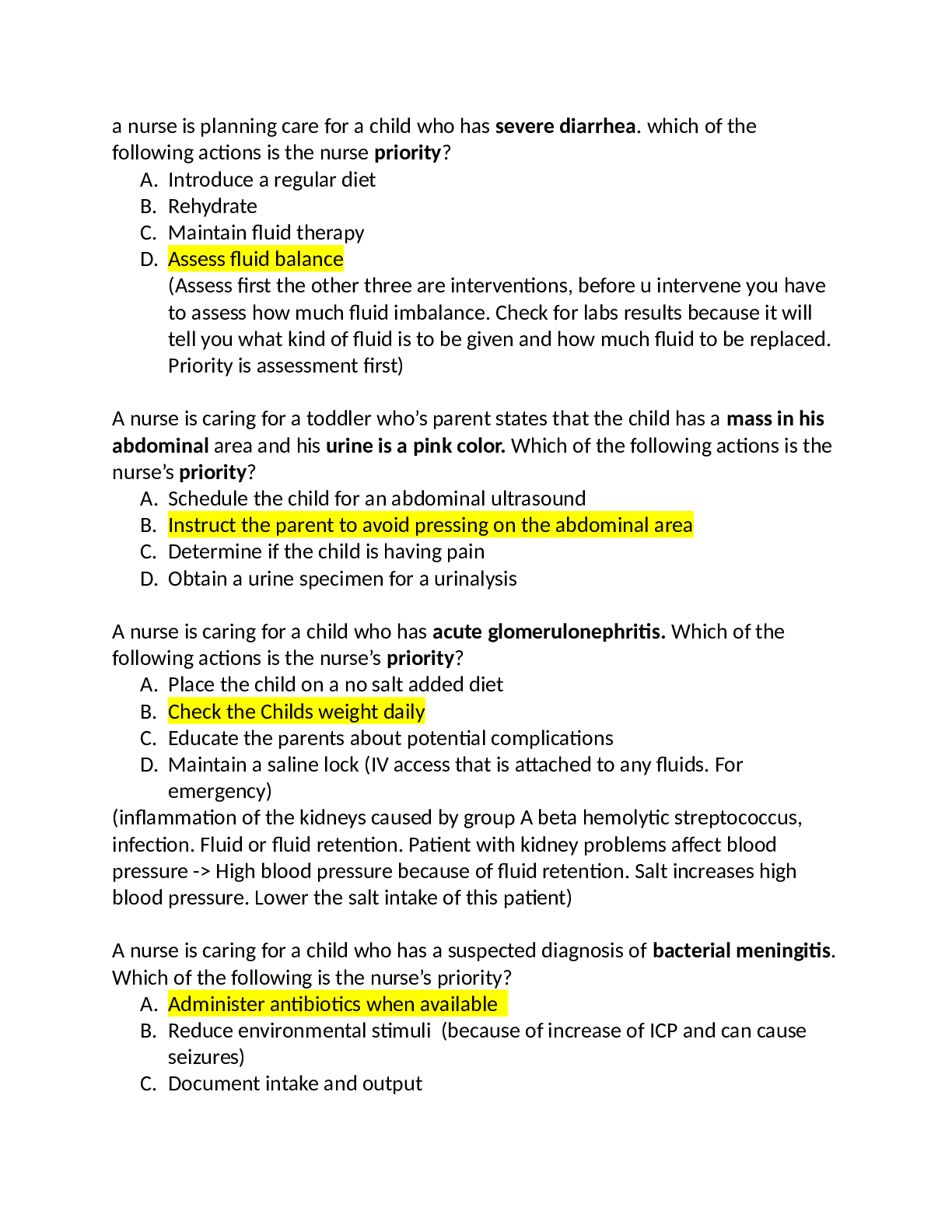




 – Chamberlain College of Nursing.png)

